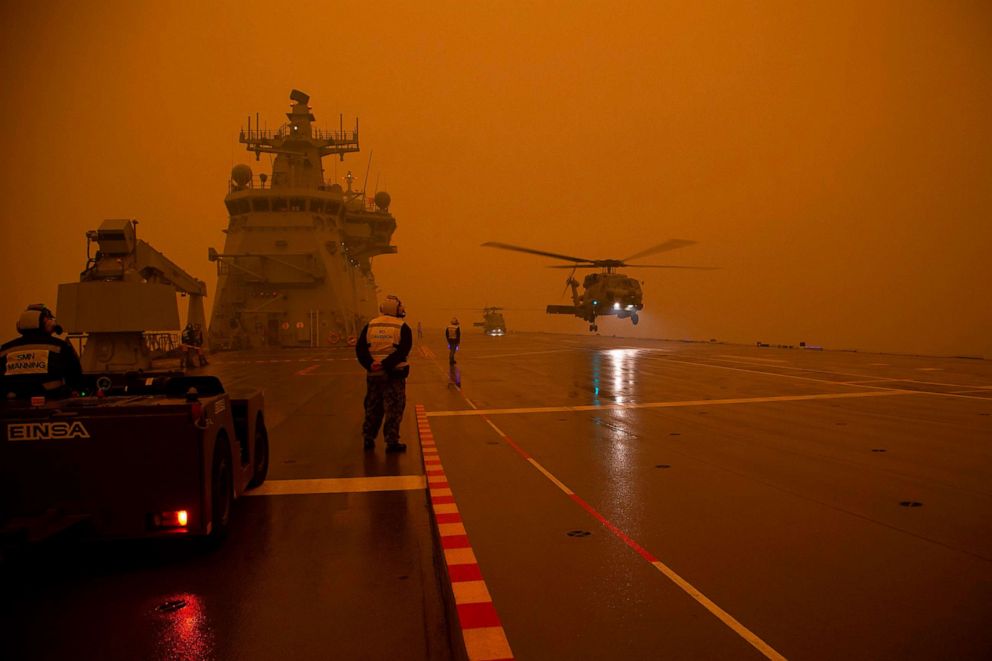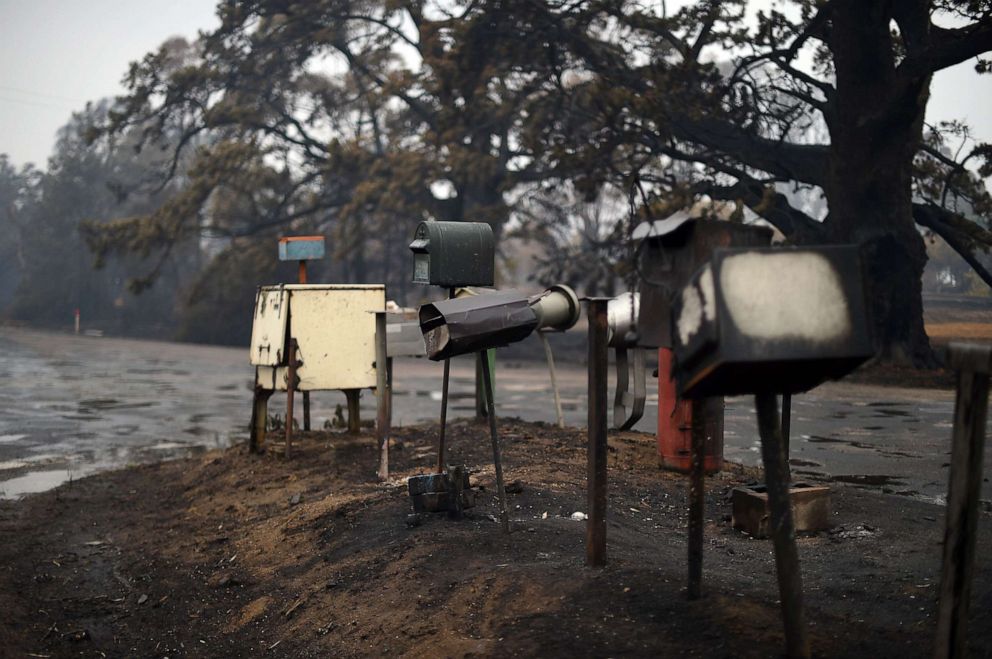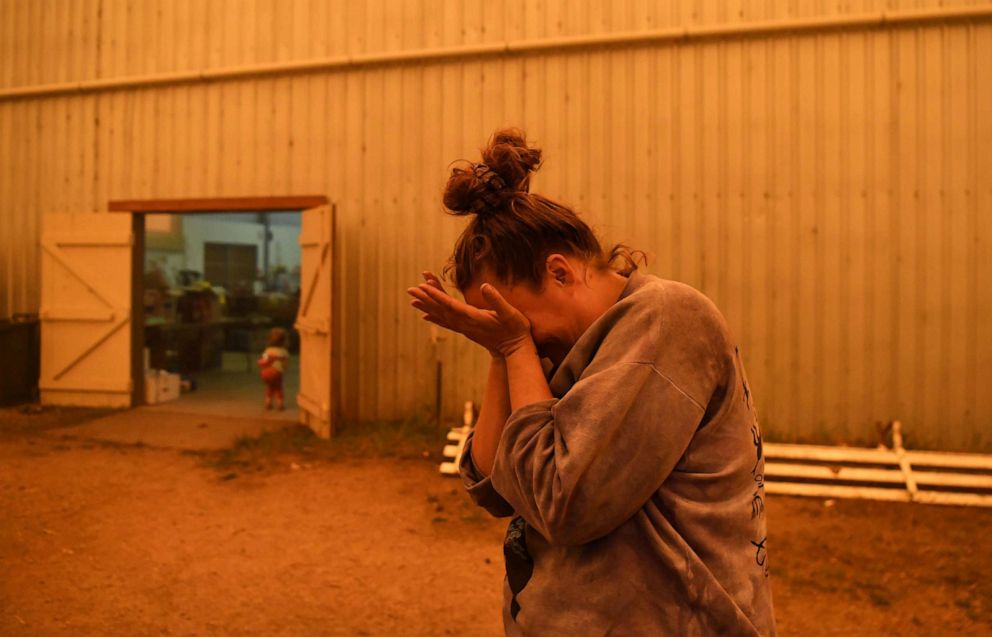Climate change can ‘supercharge’ wildfires in Australia through more extreme heat, drought
Climate experts say Australia's hottest, driest year has made the fires worse.
Climate change can increase the chances that areas prone to wildfires see both record high temperatures and drought simultaneously, creating the potential to ”supercharge” the wildfires in Australia after 2019's record-high temperatures, climate experts say.
These fire conditions match what climate scientists have been predicting for more than a decade. A United Nations climate report published in 2007 said heatwaves and fires were “virtually certain to increase in intensity and frequency” as global average temperatures increase.
“An increase in fire danger is likely to be associated with a reduced interval between fires, increased fire intensity, a decrease in fire extinguishments and faster fire spread,” the 2007 report said.

The brush fires in Australia this season have burned more than 12.35 million acres of land. At least 25 people have been killed and 2,000 homes destroyed, the most casualties from wildfires in the country since 2009, according to the BBC. The University of Sydney estimated that 480 million animals have died in South Wales alone.
Zeke Hausfather, an energy systems analyst and climate researcher at Berkeley Earth, said those factors play a significant role in the severity of the ongoing fires in Australia.
“Wildfires around the world and in Australia in particular have been happening for a long time but what we do see is years where it's been hotter and drier tend to be years where we see more area burned,” Zeke Hausfather, an energy systems analyst and climate researcher at Berkeley Earth told ABC News.
Hausfather said warmer temperatures and extreme weather have made Australia more susceptible to fires and increased the length of the fire season. He said the hotter, drier conditions combined with record high temperatures in 2019 created prime conditions for the devastating fires.
"The combination of those two can really supercharge Australia's fires. 2019 was the perfect storm for being the warmest year on record for Australia and the driest year on record for Australia,” Hausfather said Friday.

Noah Diffenbaugh, a climate researcher and earth system science professor at Stanford University, echoed that climate change is elevating the risk of severe fires through more extreme heat and drought conditions while also causing average temperature to rise.
“When low precipitation does occur, it's much more likely to occur in conjunction with high temperature. And when low precipitation occurs in conjunction with high temp it's much more likely to create the very high fuel loads we're seeing around the world including in Australia right now," he told ABC.
He added that more severe wildfire conditions from heat and drought can’t be reversed and will increase if temperatures continue to warm, but that different policies about how to manage land vulnerable to wildfires can help reduce the risk.
"What we see clearly is that the odds that different regions around the world experience warm and dry conditions simultaneously has already increased substantially as a result of the 1 degree of warming we've already had," he said. "We're already in a regime where different regions of the world are much likely to be warm and dry simultaneously compared to 50 years ago or 100 years ago.
“Approaches that ignore the fact that the climate is changing and the odds that these kinds of hazards like wildfires, like heat waves, like heavy rainfall, like extreme storm surge flooding," Diffenbaugh added. "Not acknowledging that these hazards are changing is a recipe for continuing to be exposed to these kinds of unprecedented conditions.”
And Kevin Trenberth, a senior scientist at the US National Center for Atmospheric Research, said warmer ocean temperatures are also contributed to more variable weather around the world. Trenberth researches energy imbalances in the atmosphere attributed to greenhouse gases and global warming and said hot spots in the oceans can create a wave in the atmosphere that locks weather patterns in places, causing longer rain events in Indonesia, for example, and at the same time contributing to drought in Australia.
"Under El Nino conditions, Australia tends to be in drought and has more wildfires. In this case, it's not El Nino as such, but there's certainly a role for the oceans in setting up the weather patterns that have been very, very persistent," he said. “The drought conditions in the dry areas are downstream in terms of the atmosphere so it's like a big wave and you have the crest of the wave in the Indonesian region and the trough of the wave over Australia.”

He said that once an area is in drought conditions for two months or more, it increases the risk of fires catching and spreading, and those changing weather patterns due to global warming make drought events longer.
“The proximate cause comes about from multiple reasons, but the fact is that the trees and the plants in the area have been dried out, they're wilted, once that starts the risk of the fire growing and expanding is greater because of the climate change factor. So the climate change doesn't start these fires but they catch more readily and they can spread more readily,” he said.
Climate experts emphasize that climate change is not the only factor in the severity of wildfires. How land is managed can impact the amount of fuel available for fires through practices like controlled burns and other factors can impact the risk to people and property through warning systems and the type of development in a given area. And changing those policies have great potential to limit future damage from wildfires along with changes to how fire management resources are dispatched.
The U.S., Australia, and other countries share fire suppression planes and personnel between countries like the U.S. and Australia during their respective fire seasons, but the fire seasons are stretching longer into the fall and overlapping adding to the strain on resources.



